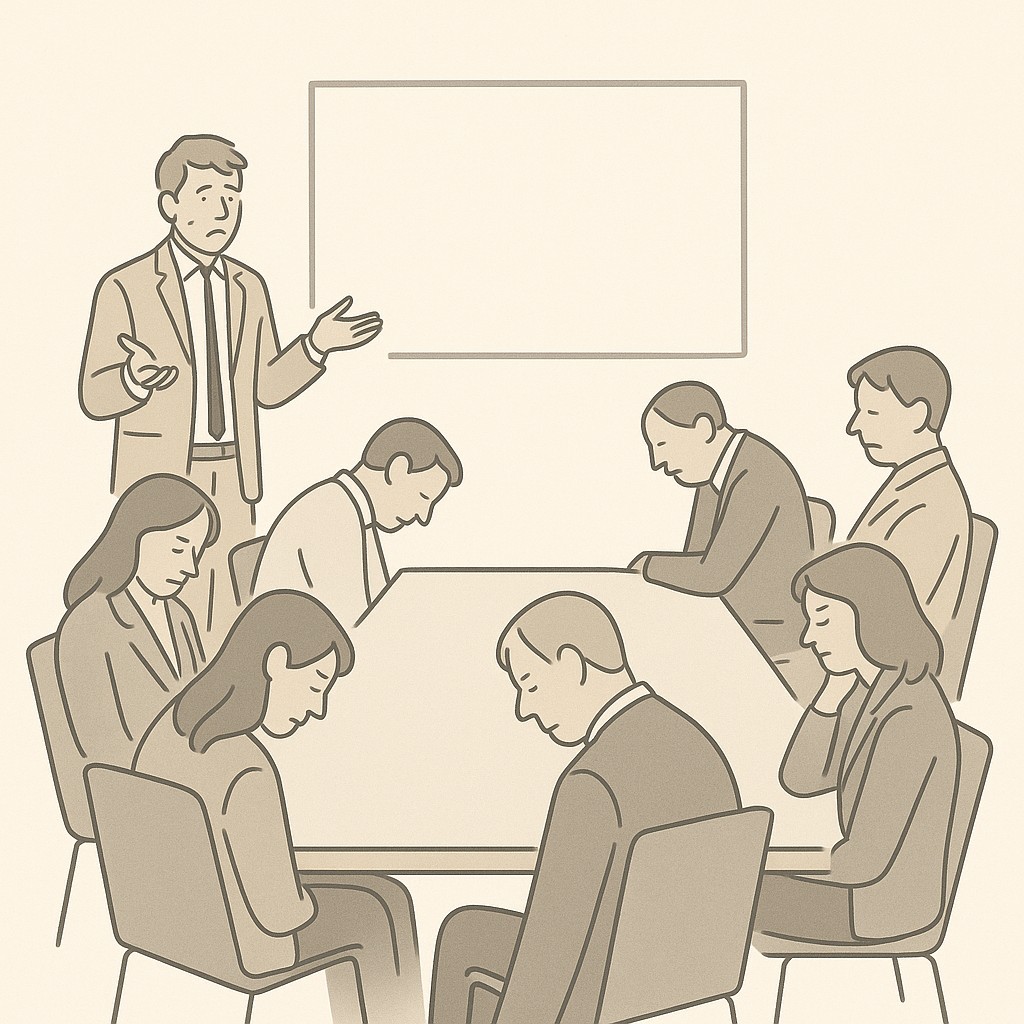Technical Storytelling for Stakeholder Buy-In: From Features to Outcomes, Measurable Impact, and Pilot-Ready Action
Technical Storytelling for Stakeholder Buy-In: From Features to Outcomes, Measurable Impact, and Pilot-Ready Action

Why My Pitch Fell Flat (and What That Reveals)
I walked into that quarterly planning sync clutching a deck I was sure would land. You know the feeling. There’s this big idea you just know will make life easier for everyone. Faster deployments. Cleaner workflows. Fewer headaches for the engineering team. In my head, the downstream effects were huge—a complete game-changer. The benefits seemed so obvious I barely rehearsed what I’d say.
But after the last slide, I scanned the room for nods. Even a little pushback would have been nice. Instead, the room made it painfully clear that without technical storytelling for stakeholder buy-in, my pitch was going nowhere. For a second, I actually wondered if I’d skipped a slide by mistake. It was this strange limbo—no one was confused exactly, but no one was convinced either. That moment stuck with me; something important was missing.

Here’s where I fumbled: I was speaking in features and optimizations—what the system could do—rather than translating technical to business by focusing on the risks, outcomes, and customer impact that decision-makers track. For engineers, outputs are second nature. But if you’ve ever prioritized outcomes over features, you know the gap (NNG Group). I’d dialed everything for an engineer’s brain, not for the people in charge of results.
So let’s flip the script. I’m not asking you to oversimplify or skip technical rigor. I’m sharing how audience-centered storytelling turns technical detail into value that actually lands. That day, standing in front of those blank stares, was a pivot. We’re rebuilding that pitch together—so next time, the nods come when they should.
How to Map Features to What Stakeholders Actually Care About
Here’s the shift: stakeholders aren’t buying deployment pipelines. They buy reduced risk, quick value delivery, and visible customer impact. If you want your proposal to move, start with what gets people out of their seats. It’s not the feature list. Turns out, framing projects around loss and impact drives action—loss-framed appeals did better in health decisions, at least for a while.
Take continuous deployment. Engineers love pitching “a new pipeline” or “automated test integration.” But the right mapping flips it: “We fix production issues instantly—before customers notice. Incidents get resolved fast instead of lingering. That means less downtime for users, fewer fire drills for support. Not only does recovery speed up, but each release carries less risk of breaking something critical. Happier customers, fewer expensive outages—the business feels those wins. Decision-makers don’t need to care about the tooling to see the value.”
What do product leaders want to hear? They look for less rollback drama, shorter timelines, and measurable improvements their teams can report, and you influence stakeholders with storytelling by framing these priorities in narratives they trust. Customer teams focus on downtime. When you say, “fewer frustrated calls, smoother incidents,” that’s what they remember. Executives boil everything down to risk, cost, and reputation. Will this make failures less expensive? Will it protect our brand? Does it help us move faster?
Here’s a pattern I started leaning on: feature leads to risk reduction, which leads to a real outcome, which leads to measurable impact. Spell it out. “Automated CI cuts human error, slashes rollback incidents, and delivers higher uptime—with a measurable drop in support tickets.”
I used to worry I’d oversimplify and lose technical rigor. But six months ago, I watched a team make decisions at double speed because the story was clear. That’s when I realized clarity is the lever that actually gets things built.
Make the Pain Measurable—That’s When Outcomes Move People
Right now, customers stare at a spinning wheel for ten seconds. Most leave before anything loads. Invisible churn. Every second wasted chips away at trust. When you make that pain concrete—“We lost 40% of trial signups last quarter to slow onboarding”—everyone in the room feels it.
For us, here’s the cost: every new feature takes twice as long to build as it should. I know the roadmap keeps slipping, and it’s definitely not for lack of effort. This upgrade? It cuts that cycle in half. Suddenly, “optimizing pipelines” isn’t about new tools—it’s about actually delivering promises faster, with fewer missed deadlines.
Reliability in production is where vague risks blow up into headline problems. The story often goes like this: incident detection takes twenty minutes, but every minute grows the blast radius. Four hours to recover, every time. When I map it out—“Each major outage last year cost us $24,000 and brand pain you don’t see”—people shift from theoretical talk to “how do we fix this?” You need clean, trackable metrics—metrics stakeholders care about: detection time, impact scope, mean time to recovery. Once numbers are on the table, it stops being “an engineering issue.” Now it’s a business risk.
Here’s a weird little loop my brain falls into: I once tried using food metaphors to sell a change. I joked the CI pipeline was the secret sauce, but someone interrupted to ask what was actually on the menu. The point? People don’t care about the recipe—they want to know if dinner’s better and out faster. Maybe it was a stretch. But it snapped me out of feature-speak for good.
Once the pain is real and the benefits are measurable, the conversation shifts. People stop debating tech and start negotiating outcomes. Instead of “do we need this upgrade?” it’s “how quickly can we test it?” Momentum builds. It’s not about hard selling—it’s about making the stakes too clear to ignore.
Turn Clarity into Action—Frame a Pilot, Not a Project
Make your pitch practical. Don’t go in proposing huge changes or abstract roadmaps—frame a pilot instead to make technical proposals persuasive with clear success criteria. Keep it small and real. Define what success looks like (“zero missed deployments for two weeks”), prep a rollback plan, and call out the timeline. Aim for next week, not next quarter. What gets a pilot approved is tying your idea to measurable metrics stakeholders need—and showing you’ll adjust fast. A tight pilot says you’re serious about results, not just talk.
Here’s how I learned this matters. One time, I tried pushing for all-or-nothing buy-in on a stack rewrite. It went nowhere. Pilots let people say yes without risking everything. When I switched to pitching “let’s try this with just one low-risk service,” we actually moved. Metrics keep it honest: mean time to recovery, lead time, successful deployments, incident count. Set rollback triggers—say, uptime dips below 99.95%, you revert. Build in explicit decision gates: stakeholder review after two weeks, go/no-go based on real results, and no blame if it’s not working. That’s how you build buy-in for unproven ideas—with manageable experiments.
Stakeholders want confidence the pilot won’t harm business outcomes. Tie guardrails straight to what matters—risk, confidence, impact. When people see those are protected, hesitation softens. It’s not just a technical win—it’s an accountable path to improvement.
So next step: who’s piloting, when’s kickoff, and how are results tracked? Take half a minute in your next pitch to say these aloud. Odds are, you’ll be set to start by next week.
Draft stakeholder-ready emails, pilot plans, and clear metric summaries in minutes with an AI built for engineers and builders, powering outcome-focused engineering communication so your pitch moves forward faster.
Your Move: The Technical Storytelling for Stakeholder Buy-In Playbook
By now, the friction should feel familiar—without storytelling for stakeholder buy-in, good technical pitches fall flat because they’re not tuned for the audience. This is post 4 of 11 in the Storytelling for Engineers series. The toolkit comes from experience, not theory, after one too many blank stares. I’m sharing storytelling tactics for engineering buy-in you can actually use. We’re in the messy middle of the journey—the moment when your messaging calls the shots and the results start to show.
The playbook for technical storytelling for stakeholder buy-in distills down tight: shift from feature lists to outcomes, from hand-wavy claims to stories where the pain is clear and measurable, and ask for small pilots, not sweeping bets. It’s funny—I keep circling back to that spinning wheel. Until the cost was measured and mapped to customer pain, everything else felt abstract. I used to think technical depth would win by itself; now I know it just opens the door. Without story, nothing gets built.
You don’t have to wait for the next moonshot project. Try these out this week and watch how your next pitch lands. Subscribe for leadership and engineering tips. Post 5 is up next.
One last thing I’m still working on: sometimes, clarity and urgency aren’t enough if the timing just isn’t right. I know the playbook. But some weeks, even a perfect pitch hits a wall I can’t map yet. Maybe that’s next on my list to figure out.
Enjoyed this post? For more insights on engineering leadership, mindful productivity, and navigating the modern workday, follow me on LinkedIn to stay inspired and join the conversation.
You can also view and comment on the original post here .
